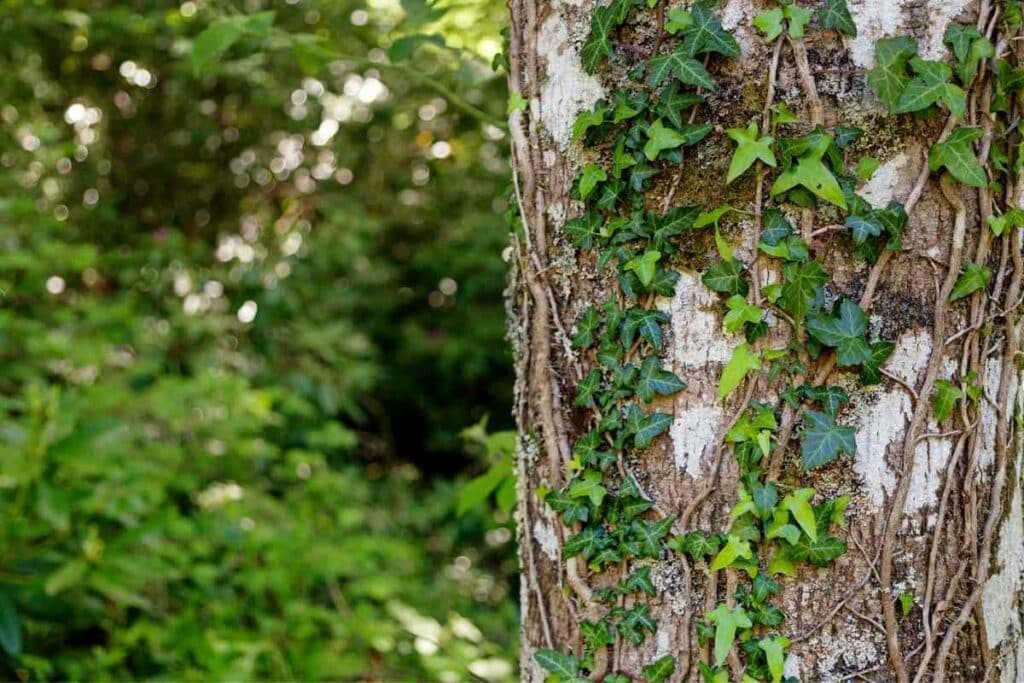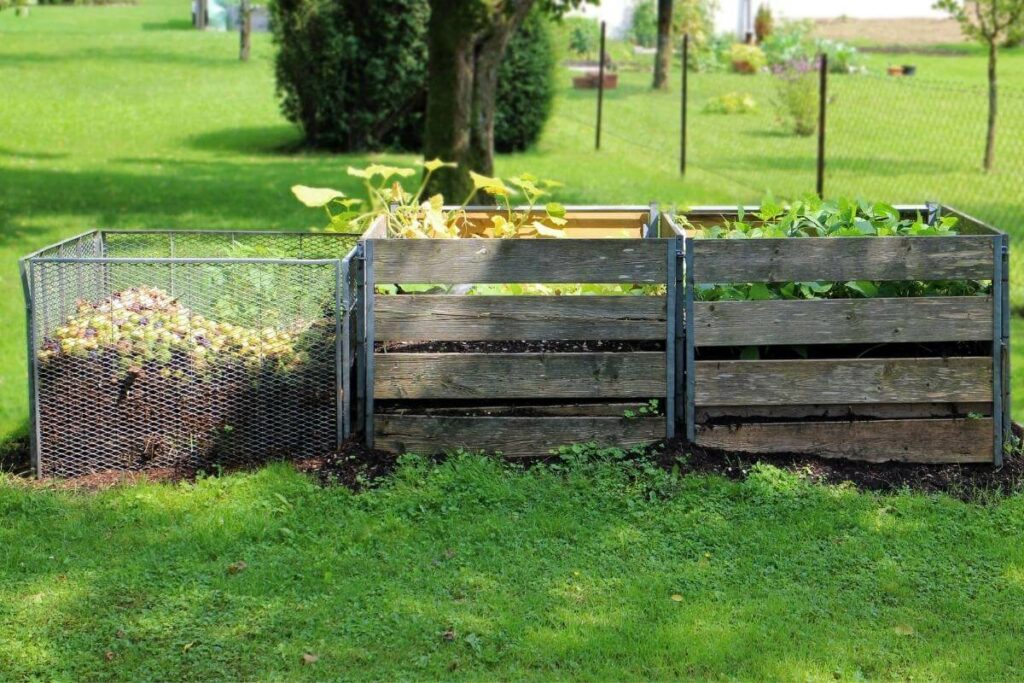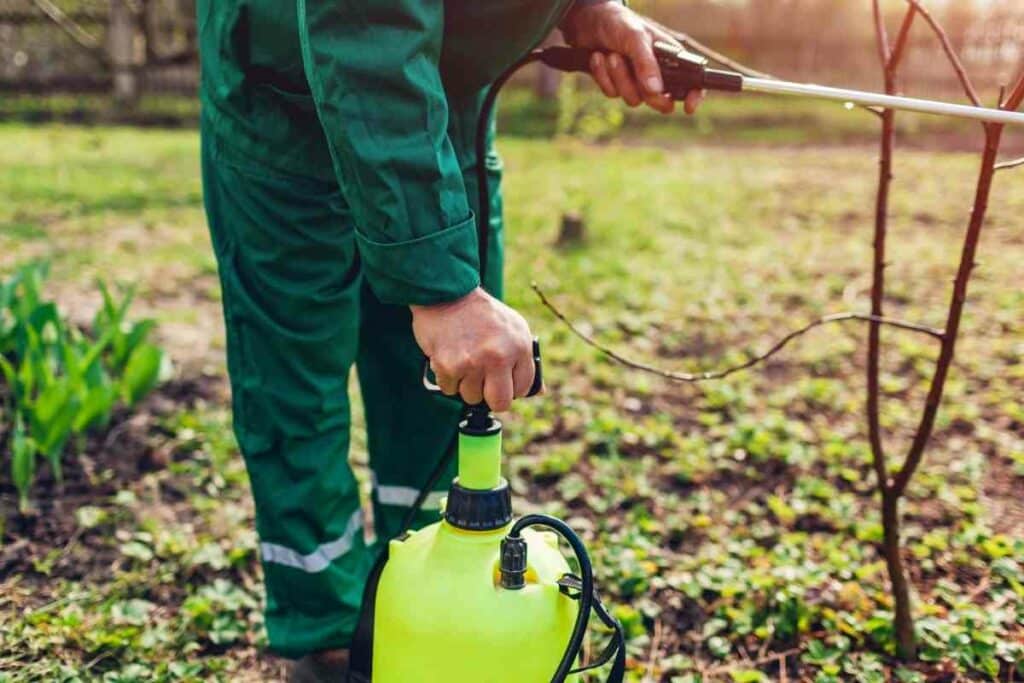Is your yard being overtaken by ivy? Left unchecked, this prolific grower is highly invasive and can damage the structures it grows on.
If you’re wondering how to eradicate ivy from your trees and walls, this concise article shares effective methods for killing and removing ivy.
Ivy is a beautiful and easy-maintenance woody vine that is used in a variety of landscaping projects. It is versatile, being planted as a ground cover or a classic wall covering, and ages beautifully.

But ivy can be aggressively invasive and can rapidly spread in all directions if it is not carefully managed.
Not only will ivy spread on any surface it encounters, but it will also cover and progressively smother other plants, trees, and grass. It can also block gutters and drains and damaged masonry.
What to Expect? For any property owner who has runaway ivy, the time comes when enough is enough! Ideally, you want to get the ivy up and off your property as quickly as possible before major disease and damage occur, killing it so it cannot return.
About ivy
Hedera helix, known as common or English ivy, is a hardy evergreen climbing plant that is often used to provide attractive cover on walls, fencing, and trellises.
It is fast-growing and spreads by tiny adherent rootlets that grow on the plant stems.
As it matures, it provides warmth and shelter for a variety of wildlife, including insects and birds.
Though it is popular in US gardens, it is a non-native plant that is considered invasive in California and the northwestern states.
How to quickly kill ivy

Rampant ivy can quickly be brought under control with some physical work and, usually, a herbicide.
Wear personal protective clothing to protect your eyes, hands, skin, and breathing from these chemicals and any irritants sap the ivy secretes as you handle it.
Here are the main steps.
1. Sever the main stem
You can aid the manual removal of ivy from your property by severing ivy growth at its main stem with sharp shears.
As the plant dies off, it will become easier to remove from the areas where it is growing.
2. Detach the ivy from the surfaces it is growing on
You can’t avoid getting stuck in and physically removing the ivy and its tiny roots and tendrils that stick and embed themselves in surfaces.

Ensure that you wear long-sleeved clothing and gloves and simply pull the ivy off, wood, brickwork, and tree trunks.
Be gentle, as the adherent roots can damage plaster or brickwork as they are pulled off.
Once your surface is exposed, you can get rid of the hairy tendrils and roots by scraping and scrubbing brickwork and wood.
You can even use soap and water to loosen roots or burn them off bricks with a blowtorch.
Works Best – You should tack ivy that is growing on the ground with a brush cutter or shears, cutting through its root and sucker network and lifting off the vegetation.
This job needs to be completed carefully so that no ivy physically remains to regrow.
If you are removing ivy from trees, remove it carefully, as you can damage the bark. Use sharp shears to cut away the ivy that is closest to the ground, where its roots connect.
3. Dispose of the ivy carefully
Ivy is extremely fast-growing and will regrow if not physically removed from your property.
The simplest way to get rid of the ivy is by bagging it and disposing of it in your household waste.

If you try to compost ivy, it will continue to grow in your compost heap, even if shredded.
Composting ivy is not impossible, but the ivy has to be killed first, usually by long-term storage in a plastic bag or completely desiccating it in the sun.
An alternative 100% effective method of disposal is burning. You can then add the ashes to your compost heap.
4. Apply a herbicide to the areas where the ivy has been removed
The conventional method of managing ivy involves treating the areas where ivy has been growing with a topical herbicide to prevent it from growing back.
This should be done as possible after lifting the ivy.
Herbicides are nasty substances that have negative effects on you and your other plants. Their environmental and safety profile is extremely poor.

This means that you should protect yourself and any surrounding plants from exposure to these chemicals.
You need the right weather for herbicide treatments to be effective, usually with temperatures between 60 and 90 degrees Fahrenheit (15 and 30 degrees Celsius) and minimal wind.
Heads Up! You may also need to repeatedly apply the herbicide because the wavy cuticle of the ivy prevents penetration of the chemical.
5. Herbicide alternatives can be used
Because herbicides are very harmful, persevering with less toxic or organic methods is the best way to keep your garden ivy free.

Here are some of the best alternatives to glyphosate and other herbicides for killing ivy:
- White vinegar: on a hot sunny day, spray down the surface where the ivy was removed with white vinegar. Keep reapplying at regular intervals for several weeks.
- Steam or hot foam weeding: Pressurized steam or hot foaming agents can also destroy remnants of ivy. These solutions have high water consumption and accidental contact can cause severe burns.
- Diquat: Diquat dibromide is a non-selective herbicide with contact action that has lower human and environmental toxicity than glyphosate. Complete spray coverage achieves the best results.
- Pelargonic acid: This is a postemergence herbicide alternative that has a fatty acid herbicide contact action. Use in warm sunny weather for fast, visible results.
6. Repeat applications of herbicide are usually necessary
You’ll need to monitor the areas that you have treated to ensure that you truly killed the ivy.

Repeated applications of herbicide can ensure that the ivy is completely killed. If you see emerging vines, pull them up and reapply your herbicide treatment.
Keeping ivy at bay
If you want to limit ivy to a particular area, you need to be proactive about controlling it.
One of the best things you can do is control growth at the edges of your ivy, trimming them frequently with sharp shears.
The best time to hard prune your ivy is in early spring.
Rounding up
Ivy is a beautiful climbing plant, but it can easily become a problem through neglect.
Its renowned hardiness and fast growth mean it is only a matter of time before it becomes invasive.
Containing or controlling ivy requires persistence, but is essential to prevent damage to your the plants and structures in your yard.


